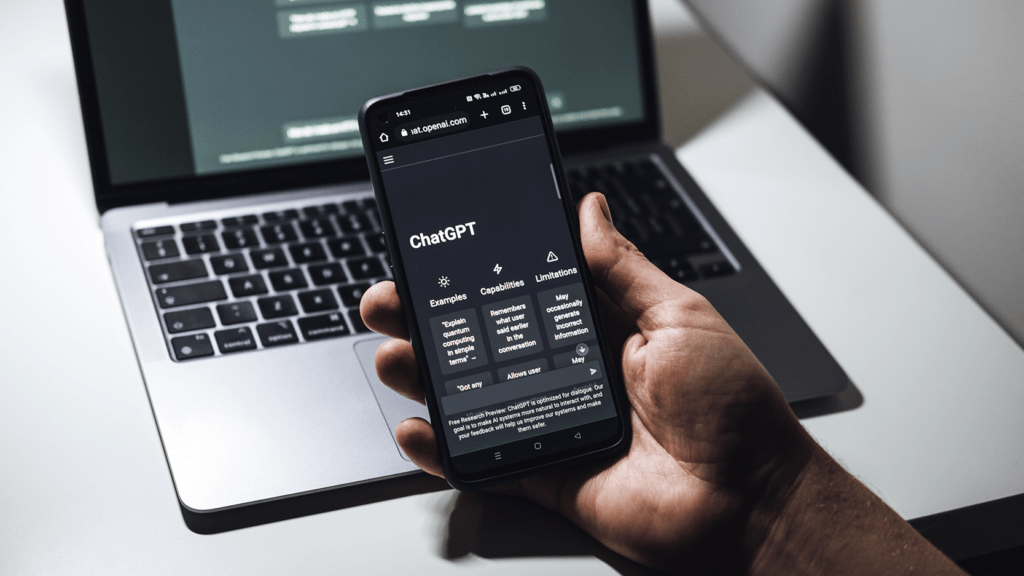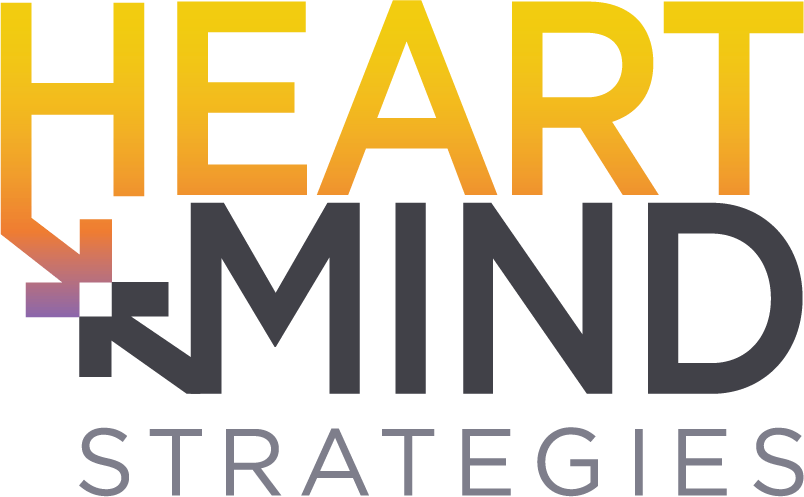By Jocelyn Thomas, Senior Solutions Director
If there’s one thing that’s arisen from AI’s moment in the spotlight, it’s that many of us know enough to be dangerous, but few of us know enough to advise. While we don’t want to say there’s danger in using AI to plan the perfect Santa Barbara getaway or using it to create a menu for a gathering with two vegans and four omnivores, it’s worth noting that AI is evolving every day. The notion that we can create an article that explains how to best use it in research is temporary, at best. That said, we’re still going to do it, because we want you to benefit from the hours we’ve spent applying these tools to our own market research methods.
This piece will focus on generative AI. You may not know that you’ve already been using AI to some extent for quite some time — blame Alexa, Siri, and online searches — but what we’re talking about goes beyond that. Generative AI generates new data instead of classifying or performing specific tasks, like the more familiar forms of AI. This brings with it a slew of possibilities, but like any other tech advancement, it also comes with cautionary statements. This is going to focus on the “how” of generative AI in market research.
When we first discussed how to use AI at Heart+Mind, we went big: what if we use this as a proxy for human interviews? The theory made sense at the time. We knew we couldn’t input confidential data into the tools, so we thought of ways to harness the power that would allow us to keep information secure. Our main theory was (and remains) that AI can be used to supplement the work our human team members do in many steps of the research, and that by using AI and humans, we’re more efficient.
Related: Heart+Mind Shares Pioneering Experimental AI Study
How to Write AI Prompts
When interacting with AI, the prompt is everything. In fact, when you write a prompt you are programming in the English language – you are a developer!
Generative AI is a partner, it’s eager to please, and it sometimes makes things up so that you’ll be impressed or happy with it — (think of it almost like a high school prom date, except AI has essentially “read” the entire internet, rather than just being a Napster prodigy). The skill users need to develop is the art of the prompt and the conversation-like aspect of interacting with AI tools.
Remember you’re working with technology that is trained to guess what you’re asking and generate a response from it’s understanding of your intent. You’re not talking at it, as you would a search engine, nor is it talking at you. It’s a two-way conversation, meaning that you can develop and hone your exploration as you go.
This is important: AI learns from your “conversation.” The more words you give in your prompts, the more data the language model has to understand your request and craft a more unique and creative response.
For example, you may start by asking it to write you an out of office message, but as you work to hone the message, AI learns that you want something short, you like the humor in this version but that it was over the line when it mentioned your family — AI adapts as you go.
The second thing to remember with prompts is that context and specificity are key. The more detail you can give about the situation or what you’re looking to get out of AI, the better job it will do for you. Below is an example of how we learned to adapt our prompts for summarization. We started with a simple request, but eventually learned that we could ask for something that would get us closer to where we needed to be. Instead of asking for a summary, we asked for bulleted lists of common themes which saved us time in reviewing AI’s summary and manually creating a list of common themes based on that.
Examples: Good Prompt vs. Better Prompt
- Good: Please summarize the health concerns mentioned in this text.
- Better: This document is an interview with someone 55 years old. One of the topics discussed in the interview is a list of all of the health concerns they have in their life right now. Complete four tasks centered around the dialogue in this text about the person’s health concerns today. First, make a list of all health concerns they say they have today. Put this list in rank order of the most significant concern to the least. Second, make a list of all the ways that concern is impacting their daily life today. Put the one impact that is the most significant to them at the top. Third, make a list of all the ways that life impacts from the health concern are making them feel on personal and emotional levels. Look for questions about having a “sense of” this or that and include those in this summary of emotions and desired values they seek in life. Put the emotions and values that are most significant at the top. Fourth, write a short summary statement that starts with the most important health concern they have today, how it is impacting their life, how that makes them feel, and, ultimately, impacts their ability to have a greater sense of some terminal value.
Third, your results will be better the more guidance you give the AI engine in the prompt about the role you want it to play in responding to your question. For example, you will get very different results if you start the prompt with “you are a qualitative market researcher trying to uncover the human insights from a series of interviews that were completed by a trained moderator” versus going directly into your question or task you give the AI partner. Why? Because you are giving the language model more information to work with in trying to understand what you need – this means it can give you a more unique and detailed and creative response.
One of the best “formulas” for prompt engineering we’ve found is Christopher Penn’s RACE approach. Penn says you start with Role, then Action, then Context, and then Execute to guide how you want the response to be delivered. These are great steps.
Finally, you probably have not thought about asking the AI engine to help you develop your prompts. You can. Try telling it what you need and then asking what additional questions it needs answered to truly help you in the best way.
Related: Generative AI Solutions for Market Research
AI Discovery + Hypothesis Development
We learned that AI can help streamline the discovery and hypothesis development process, leaving our team members free to design and kick-off research, instead of spending time in internet rabbit holes before being able to design an effective approach.
The important thing to remember is that AI is a partner, but not experienced enough to be independent. When using AI for discovery and hypothesis development, it’s important to back up the information with a human-driven exploration of the relevant sources – subject matter expertise matters. Think of AI as someone who works at the bookstore — it can tell you where the cookbooks are, but it can’t tell you which will have the best recipe for cacio e pepe.
A few of our favorite AI prompts for discovery (after providing role and context guidance):
- What are the challenges [target audience] face when it comes to [research topic/product]?
- What are the challenges [target audience] face when it comes to [research topic/product]? Please list out the most common challenges, ordered from the challenge that impacts the most people to the challenge that impacts the fewest people. Point out any differences based on demographics, location or other significant trends.
- How, if at all, have [target audience] tried to address those challenges? Point out any differences based on demographics, location or other significant trends.
Prompt add-ons:
- “limit prose” – this tells AI to be succinct in its response
- “role play” – this tells AI to assume a type of person, which can be helpful when exploring specific audiences. When using this, ask AI to role play as the user you’re interested in (i.e., a 55-year-old female in the Midwest with an annual household income of $65,000)
These prompts give parameters for what you’re looking for, including target audience and other key elements. These language models are trained on large data sets, the more guidance you give the more meaning from language it can derive to better deliver actionable responses.

Use AI to Drive Efficiency
Moderators don’t always know the intricacies of the topics they’re called upon to explore for clients. Moderator expertise lies in connecting the end-client’s research goals to the human by fostering an open dialogue and turning insights from those conversations into actionable recommendations. For us to be able to do that, we don’t have the time to become experts, but we will rely on discovery and conversations with client stakeholders. AI has added a new element to this process because now the moderator can get a treasure trove of directed, detailed, and above all, relevant understanding that will help them create a smarter guide, faster.
For a recent project, we were dealing with multiple distinct types of stakeholders, each with their own opinions, use cases, and history with the topic we were interested in. To better understand if and how their paths crossed in this area, we used AI to understand how the core topic and product were used by each user-type. The AI output helped the team understand more about the core problems each user-type faces and how their use-cases fit together (or didn’t). This informed our initial drafts of study materials (no, we did NOT use AI to create our materials). In addition to providing the moderators with a wealth of information they relied on, this also significantly reduced the time we were asking our stakeholders to spend in reviews and development sessions for things we could learn in this manner.
Other ways to use AI in development of materials:
- Exploring: relevant competitor brands, messages, and internet chatter around a topic of interest.
- Brainstorming: Use AI to determine the most important things to consider for your audience, to ensure that your guide or survey leaves no stone unturned.
- Simplifying: We often get into the weeds when we have too much history or background on a topic. Use AI to turn your long survey questions into succinct questions targeted to your audience.
- Checking pre-coded lists: Tell it what you’re asking, show the options included, and ask if there are other related answer options that should also be on the list.
Analysis: AI Assist
The reality is that AI can’t do analysis work for you. In a fantasy world, you can upload 35 transcripts and get a nicely written summary and code list overall, by segment, and by demographic group in 10 minutes or less. We aren’t there — yet.
But you can use AI tools to summarize transcripts against key strategic learning objectives. To do so responsibly means leaning into one of the partners who have created a secure platform that uses the power of AI but keeps your data confidential and doesn’t allow it to become a part of the public AI learning model. As a reminder: anything you put into open generative AI tools will go into the larger machine learning model, is public, and is no longer secure. Think of AI like your work email and programs: don’t ever upload anything you wouldn’t want to be read in a courtroom.
The key to fruitful and efficient analysis here is specificity and being aware of limitations. It’s important to give AI the background and context for the data it’s being asked to summarize — the more you can tell it about the data you’re uploading, the better its responses to your request will be.
Limitations include:
- Tools can only handle so much text uploaded at once. If comparing transcripts from multiple individuals, consider uploading one section at a time that includes everyone’s response to the questions in that section.
- Summaries of Summaries: AI can summarize transcripts and distill them down to the most-mentioned themes in a few seconds. However, like any summarization tool, this led to losing the intricacies of our data. When we uploaded our AI-created summaries and asked for a summary of them, we noticed that key themes were missing; this was one of the many times we learned that AI needs a human to oversee its actions.
- Prompts: Garbage in, garbage out; the more specificity and background about what you’re uploading included in your prompt, the better the output will be.
Example prompts:
- This document is an interview; the interviewer asks questions about specific ways in which the current economic conditions in the country are impacting the life of the person being interviewed. We are specifically interested in the answers this person gave in the interview that reference ways in which their health has been impacted – physical health, emotional health, or mental health. Look for specific comments made that tie to that. Summarize the ways in which they say the economy is impacting their health and financial wellbeing with associated behavior changes for each. If there is nothing you can find in this section of the interview that addresses these topics report that finding back in your summary statements.
- This document is a focus group discussion with six participants and one moderator named Steve. The moderator asks the participants questions about TOPIC. First, review all references to TOPIC and what emotions participants use to describe how they feel about it. Report this back in two lists from most mentioned emotion to least mentioned emotion by the six participants in the group. Include a representative verbatim quote for each summary point you make – select the most compelling quote that conveys the idea. If you do not find anything about this topic in this text selection, report back nothing found.
Related: Practical Applications for AI in Business + Marketing

AI Reporting: When Your Creativity is Tapped Out
We’ve all been there — you’ve been staring at the same tables or transcripts for too long, you’ve analyzed and reported out the key points, you’ve made recommendations and outlined strategic imperatives. The report is due to your team for internal review tomorrow, and you have no brain power left…but at the top of every slide is a blank section that needs an attention-grabbing headline that represents the hours of work for that slide. Then do that for every. Single. Slide.
Try telling AI what the main points are for each slide. If you’re really embracing the work smarter not harder aspect of this, you should simply copy your text from the slide and ask AI to generate a headline for you (in a secure format, not standard online tools). That headline will likely only get you part of the way there, but you can apply your intimate knowledge of the topic and turn that headline into exactly what’s needed. This may not be a timesaver, but it does help alleviate burnout toward the end of a long project.
A similar process can be used to create executive summary points. Try taking the headlines you’ve crafted or refined and asking AI to turn those into a summary statement for each hypothesis or report section.
Conclusion
At the end of the day, AI is a fast-moving development space. Even writing this article was delayed because every day there were new applications, hurdles, and developments in the field. Despite that, this is something to be embraced, cautiously.
Remember that AI should be used with human direction and refinement, especially in the world of research and insights. Remember also that everything entered into the public AI like ChatGPT, Bard, and others is up for grabs — whatever you upload is now accessible for the entire world, so don’t broadcast what you shouldn’t.
Finally, remember how much the world changed with the internet, email, and text messages…then remember how quickly those took hold and how ubiquitous they are in our lives today. AI will follow a similar trajectory, and the sooner we can embrace the potential of these tools, the better our work, insights, and recommendations will be.
Reach out to Heart+Mind Strategies for help with applying these tools to market research and insights development efforts. We would love to be a human partner in your journey!
